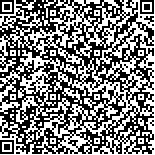| 引用本文: |
肖清玄,郭志华,罗佳敏,陈宇霞,张书萌,于子璇,陈伶利,李杰.基于TGF-β/Smads信号通路探究养心通脉方调控慢性心力衰竭血瘀证大鼠的作用机制[J].湖南中医药大学学报,2023,43(8):1353-1360[点击复制] |
|
| |
|
|
| 本文已被:浏览 2866次 下载 1418次 |
| 基于TGF-β/Smads信号通路探究养心通脉方调控慢性心力衰竭血瘀证大鼠的作用机制 |
| 肖清玄,郭志华,罗佳敏,陈宇霞,张书萌,于子璇,陈伶利,李杰 |
| (湖南中医药大学, 湖南 长沙 410208) |
| 摘要: |
| 目的 基于转化生长因子-β(tansforming growth factor-β,TGF-β)/Smads信号通路探讨养心通脉方对慢性心力衰竭(chronic heart failure,CHF)血瘀证大鼠心肌纤维化和炎症损伤的影响。方法 通过随机数字表法将45只SD雄性大鼠分为造模组(27只)、正常组(12只)和假手术组(6只),适应性喂养1周后行冠脉结扎术造模,术后10 min行心电图检测,6周后检测超声心动图、血清N端前脑钠肽(N-terminal pro-brain natriuretic peptide,NT-pro BNP)含量和血液流变学相关指标。成模后,运用随机数字表法从造模组中取18只大鼠均分为中药组、西医组和模型组,中药组予养心通脉方溶液12 g/kg灌胃,西药组予以缬沙坦溶液0.8 g/kg灌胃,正常组、假手术组和模型组予等量蒸馏水,每日1次,持续4周。药物干预结束后,超声心动图检测心功能指标,HE染色和Masson染色观察大鼠心肌组织病理改变及纤维化程度,ELISA法检测大鼠血清NT-pro BNP和肿瘤坏死因子-α(tumor necrosis factor-α,TNF-α)、白细胞介素-1β(interleukin-1β,IL-1β)、白细胞介素-6(interleukin-6,IL-6)、白细胞介素-10(interleukin-10,IL-10)含量,Western blot法检测大鼠心肌组织TGF-β/Smads信号通路相关蛋白表达。结果 与正常组比较,造模组大鼠心电图出现明显的ST段上抬,大鼠血清NT-pro BNP含量显著升高(P<0.01),左室射血分数(left ventricular ejection fraction,LVEF)水平显著下降(P<0.01),全血高切黏度、中切黏度、低切黏度显著升高(P<0.01)。药物干预4周后,与正常组比较,模型组LVEF明显降低(P<0.01),血清NT-Pro BNP、TNF-α、IL-1β及IL-6水平上升(P<0.01),IL-10水平明显下降(P<0.01),心肌组织ANGPT2、TGF-β1、Smad 2、Smad 3蛋白表达明显升高(P<0.01);与模型组比较,中药组、西药组LVEF水平上升(P<0.01),血清NT-pro BNP和TNF-α、IL-1β、IL-6水平降低(P<0.01),IL-10含量增多(P<0.01),心肌组织TGF-β1、Smad2、Smad3蛋白表达减少(P<0.05或P<0.01)。结论 冠脉结扎术可成功制备CHF血瘀证大鼠模型,养心通脉方可能通过抑制CHF血瘀证模型大鼠TGF-β/Smads信号通路,调控机体炎症损伤和纤维化机制。 |
| 关键词: TGF-β/Smads信号通路 慢性心力衰竭 血瘀证 养心通脉方 炎症损伤 心肌纤维化 |
| DOI:10.3969/j.issn.1674-070X.2023.08.003 |
| 投稿时间:2023-05-06 |
| 基金项目:国家自然科学基金项目(81874375);湖南省自然科学基金项目(2020JJ4464);湖南省中医药科研计划重点项目(2021024);湖南中医药大学研究生创新课题(2022CX57)。 |
|
| Exploring the mechanism of action for Yangxin Tongmai Formula in regulating rats with chronic heart failure of blood stasis pattern based on TGF-β/Smads signaling pathway |
| XIAO Qingxuan,GUO Zhihua,LUO Jiamin,CHEN Yuxia,ZHANG Shumeng,YU Zixuan,CHEN Lingli,LI Jie |
| (Hunan University of Chinese Medicine, Changsha, Hunan 410208, China) |
| Abstract: |
| Objective To observe the effects of Yangxin Tongmai Formula (YXTMF) on myocardial fibrosis and inflammatory injury in rats with chronic heart failure (CHF) of blood stasis pattern based on the transforming growth factor-β (TGF-β)/Smads signaling pathway. Methods A total of 45 male SD rats were divided into modeling group (n=27), normal group (n=12) and sham group (n=6) by random number table method. Coronary ligation modeling was performed after 1 week of adaptive feeding. Electrocardiography was performed 10 mins after surgery. Echocardiography, serum N-terminal pro-brain natriuretic peptide (NT-pro BNP) content, and hemorheological indicators were checked 6 weeks later. After modeling, 18 rats taken from the modeling group by random number table method were randomly subdivided into Chinese medicine group (with YXTMF solution gavage, 12 g/kg), western medicine group (with valsartan solution gavage, 0.8 g/kg) and model group. The normal group, sham group, and model group were given equal amount of distilled water. All groups had been provided with corresponding drugs or distilled water once daily for 4 weeks. After 4 weeks of drug intervention, echocardiography was used to examine the cardiac function indicators; HE staining and Masson staining were used to observe the pathological changes and fibrosis degree of rat myocardial tissue; ELISA method was used to test the levels of serum NT-pro BNP, tumor necrosis factor-α (TNF-α), interleukin-1β (IL-1β), interleukin-6 (IL-6), and interleukin-10 (IL-10) in rats; Western blot method was used to check the TGF-β/Smads signaling pathway-related protein expressions in rat myocardial tissue. Results Compared with normal group, rats in model group showed significant ST-segment elevation in electrocardiogram, significantly increased serum NT-pro BNP content (P<0.01), significantly decreased left ventricular ejection fraction (LVEF) level (P<0.01), and significantly increased whole blood viscosity at high, medium, and low shear rate (P<0.01). After 4 weeks of drug intervention, compared with normal group, the rats in model group showed significantly decreased LVEF level (P<0.01), increased serum NT-pro BNP, TNF-α, IL-1β, and IL-6 levels (P<0.01), significantly decreased IL-10 level (P<0.01), and significantly increased protein expressions of ANGPT2, TGF-β1, Smad2, and Smad3 in myocardial tissue (P<0.01). Compared with model group, Chinese medicine and western medicine groups had increased LVEF level (P<0.01), decreased levels of serum NT-pro BNP, TNF-α, IL-1β, and IL-6 (P<0.01), increased IL-10 content (P<0.01), and decreased protein expressions of TGF-β1, Smad2 and Smad3 in myocardial tissue (P<0.05 or P<0.01). Conclusion Coronary ligation can successfully prepare CHF rats of blood stasis pattern, and YXTMF may regulate the mechanism of inflammatory injury and fibrosis by inhibiting the TGF-β/Smads signaling pathway of model rats with CHF of blood stasis pattern. |
| Key words: TGF-β/Smads signaling pathway chronic heart failure blood stasis pattern Yangxin Tongmai Formula inflammatory injury myocardial fibrosis |
|

二维码(扫一下试试看!) |
|
|
|
|




